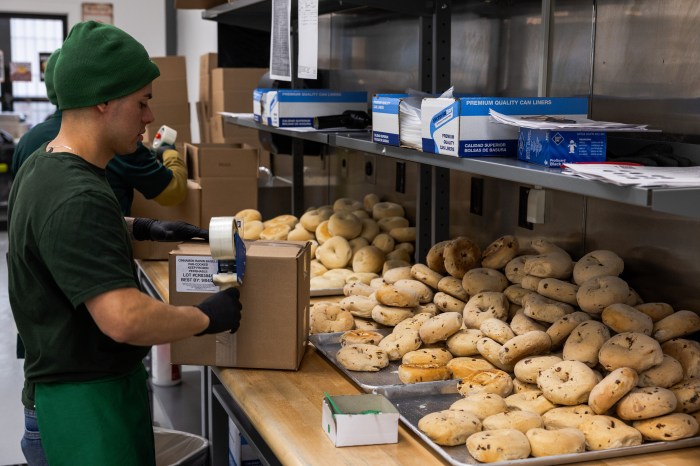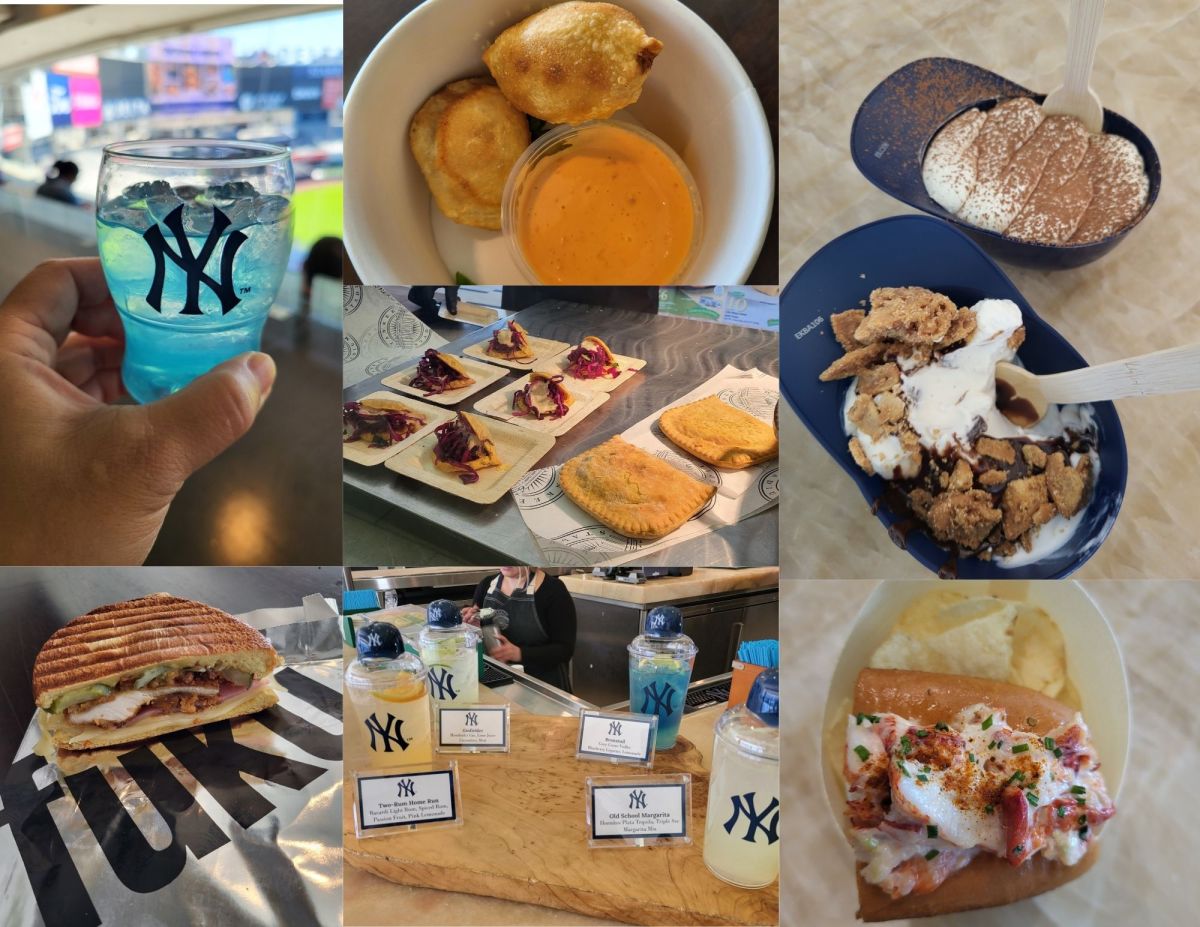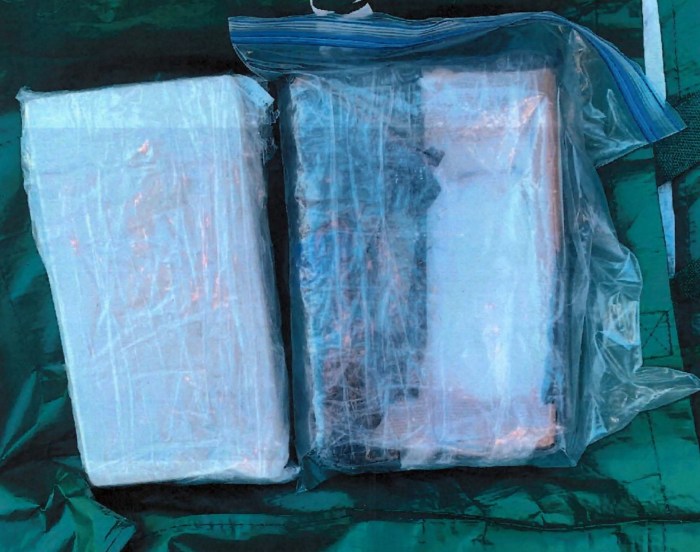If New York City is a melting pot, restaurants like Tanoreen are where the main course is served.
Rawia Bishara, the Bay Ridge restaurant’s Palestinian-American owner, was born in Nazareth and moved to New York in 1974. Not only did she make a home for herself and her family in Bay Ridge, she made a neighborhood institution.
Tanoreen opened in 1998 in a 10-table storefront. About 10 years ago, it moved a few blocks away to the larger space it now occupies at the corner of 76th Street and Third Avenue.
It’s a big year for the restaurant: Tanoreen celebrates 20 years of Middle Eastern cooking and, this week, sees the release of the chef’s second cookbook.
Bishara’s first, “Olives, Lemons & Za’atar,” released in 2014, focused on her mother’s recipes. “Levant,” out this week, explores how Bishara’s cooking has evolved over the years, pulling from the culinary traditions of Palestine, Syria, Lebanon, Israel and Jordan, but also inspired by her Bay Ridge neighbors.
“It’s really very authentic. You have Chinese, Japanese, Irish, Middle Eastern, Thai, Italian — you have every kind of food,” the James Beard Award-nominated chef, 63, said about the Brooklyn neighborhood. “You can’t help but get influenced.”
“Levant” is full of cross-cultural dishes and ingredients, from the manakeesh that she recommends substituting with pizza dough if you’re in a rush, to her chicken and eggplant rollatini, spicy lamb egg rolls and Egyptian-style lentil and noodle pilaf — a take on the street food koshari.
“I’ve never eaten koshari in Egypt — I had an Egyptian woman working with me; I asked her how you make it; she told me and then I did my own thing,” Bishara said.
The cookbook captures Bishara’s creative experimentation over the past two decades. Tanoreen’s regulars have been happy, hungry test subjects for dishes like her cauliflower steak, which customers call ahead to make sure is on the menu, and purple-hued beet hummus.
“The beet hummus itself created a big noise,” she said. “It’s only roasted beets — it’s easy to make. When people buy the book and see the recipe, they’re going to be surprised. It’s really nice to see that you can create something that looks so beautiful in a matter of an hour.”
Bishara never imagined she’d be marking 20 years of Tanoreen, which she now runs with her daughter, Jumana.
“I am very amazed,” she said. “No. 1, I’m very grateful that I was able to get to this. And second, I’m so happy that my daughter got so interested in the business and she became my partner, so there is continuation.”
Tanoreen developed a global following with the publication of “Olives, Lemons & Za’atar,” with the cookbook sold everywhere from Germany and England to Palestine and Jordan. And while Bishara would love to see Tanoreens in Paris and London, to have “a good successful restaurant, you have to be there.”
As it is, Bishara is at Tanoreen six days a week, nearly 12 hours a day, stirring the pot.
“I look at it like art — you change things, you change colors,” she said. “There are possibilities to mix between cultures and different types of food from everywhere in the world. That’s what I started doing at Tanoreen.”
For your shopping list
Tanoreen makes most of its spices (you can buy them, too, at the restaurant). But here are Bishara’s go-to shops for Middle Eastern ingredients like sumac and sesame:
- Sahadi’s, 187 Atlantic Ave., Brooklyn Heights
- Balady Foods, 7128 Fifth Ave., Bay Ridge
- Bay Root Meats, 7813 Fifth Ave., Bay Ridge
The grain attraction
Bishara’s recipes are inspired by her neighborhood, kitchen staff and children. Her son, Tarek, gave her the idea to start using quinoa as a gluten-free substitute. Here it replaces bulgur in tabouleh.
“While quinoa teeters on the edge of overexposure, I always appreciate using ancient ingredients in modern ways,” she writes in “Levant.” “This dish started my love affair with quinoa, and inspired me to incorporate it again and again in my recipes.”
QUINOA TABOULEH
Makes 8-10 servings
Quinoa
3⁄4 cup olive oil
2 shallots, diced
3 cloves garlic, diced
1 tsp. sea salt
Pinch of freshly ground black pepper
1 tsp. ground cumin
1 1⁄2 cups quinoa
1 1⁄2 cups boiling water or vegetable or chicken stock
Salad
3 cups packed chopped fresh flat-leaf parsley
1 cup packed chopped fresh cilantro
1⁄2 cup chopped fresh mint
2 Kirby or Persian cucumbers, diced
3 plum tomatoes, diced
1 large fennel bulb, cored and diced (reserve 2 fronds for serving)
1 long hot chile, seeded and chopped (optional)
1 small red onion, diced
3 scallions, green parts only, chopped
1⁄2 cup olive oil
Juice of 2 large lemons (about 1⁄2 cup)
1 tsp. sea salt, or to taste
Pinch of freshly ground black pepper
Make the quinoa: In a deep skillet, heat the oil over medium heat. Add the shallots and cook for 2 to 3 minutes, until the shallots are golden. Add the garlic and cook until aromatic, then add the salt, black pepper, and cumin. Add the quinoa and boiling water and bring to a boil. Lower the heat and simmer for 12 minutes, or until the quinoa is cooked through. Remove from the heat and spread over a baking sheet to cool.
Assemble the salad: Place the quinoa in a large bowl and add the parsley, cilantro, mint, cucumbers, tomatoes, fennel, chile, if using, onion, and scallions and toss to combine. Add the oil, lemon juice, salt, and pepper and serve garnished with the fennel fronds.
Recipe from “Levant: New Middle Eastern Cooking from Tanoreen” by Rawia Bishara © 2018 Kyle Books, photographs © Con Poulos. No images may be used, in print or electronically, without written consent from the publisher.



































